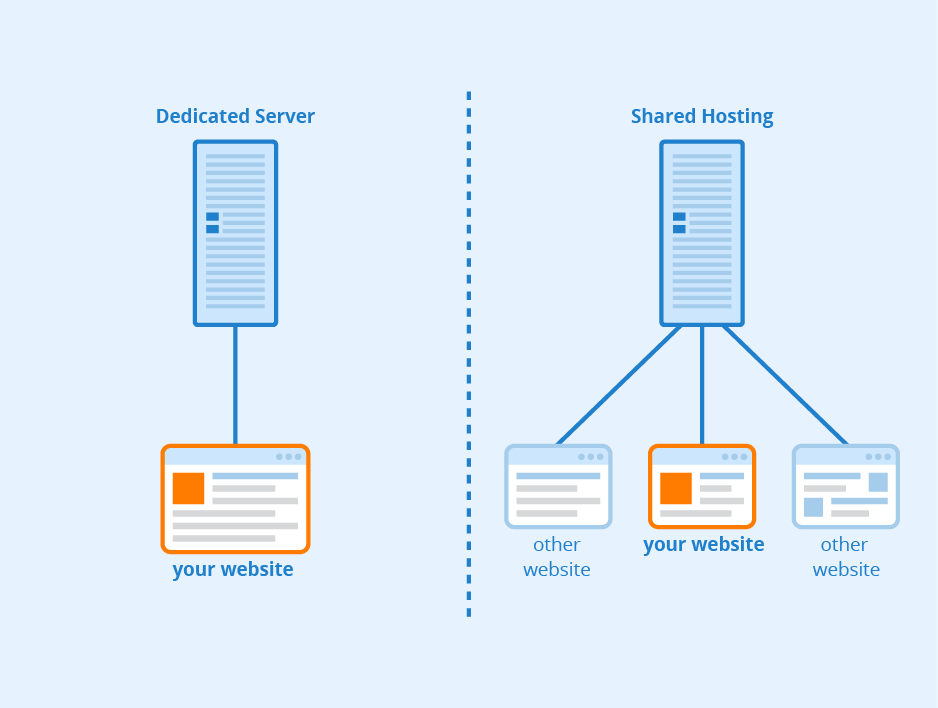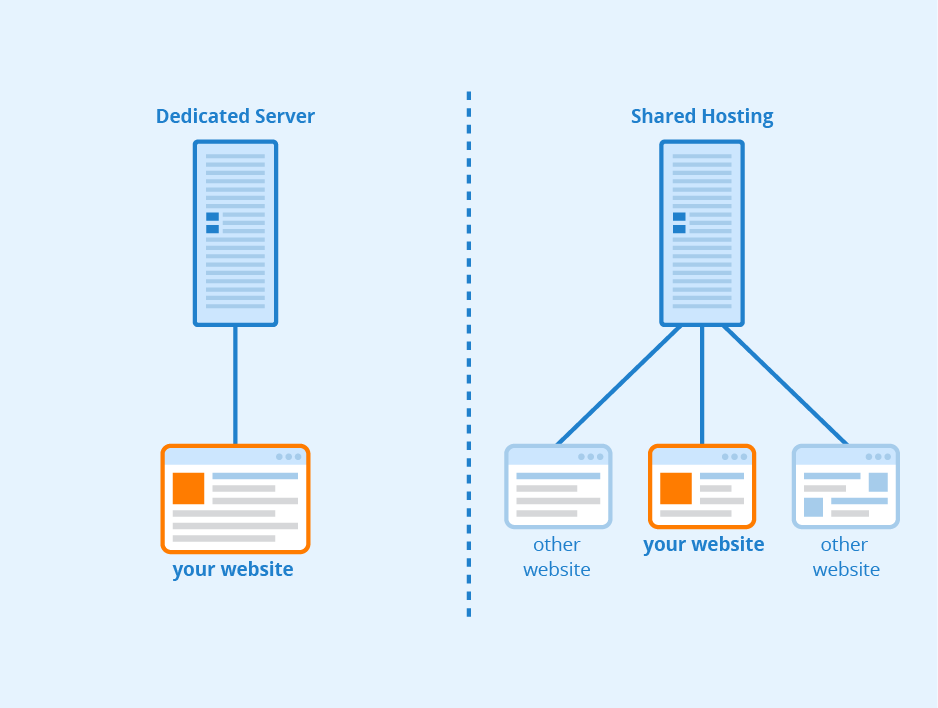Creating your own web hosting server requires technical knowledge and expertise. Here is a step-by-step guide:
1. Choose the right hardware: Ensure your server has enough processing power, storage, and memory.
2. Install the operating system: Set up a server-grade operating system like Linux.
3. Configure network settings: Assign a static IP address and configure DNS settings.
4. Install server software: Install web server software like Apache or Nginx.
5. Secure your server: Implement firewalls, SSL certificates, and regular software updates.
Follow these steps carefully to create your own web hosting server.
Creating your own web hosting server can be an empowering and cost-effective solution for individuals and businesses alike. By setting up your own server, you have complete control over your website’s performance, security, and customization options. With the right knowledge and tools, you can create a reliable and efficient hosting environment that meets your specific needs.
To create your own web hosting server, you need to consider several key aspects. Firstly, you’ll need to choose the appropriate hardware and operating system that can support your server requirements. Secondly, you’ll need to configure your server software, such as Apache or Nginx, and set up the necessary network infrastructure. Finally, you’ll need to secure your server by implementing robust security measures, such as firewalls and encryption protocols. By following these steps, you can establish a powerful web hosting server that ensures optimal performance and security for your website.
 Creating Your Own Web Hosting Server
Creating Your Own Web Hosting Server
Web hosting is an essential component of setting up a website. While there are many web hosting providers available, some individuals may prefer to have more control and flexibility by creating their own web hosting server. Creating your own web hosting server allows you to have complete control over server resources, security, and customization. In this article, we will explore the process and steps involved in creating your own web hosting server.
Before delving into the technical aspects, it’s important to note that creating your own web hosting server requires a certain level of technical expertise. It involves server administration, networking knowledge, and familiarity with server operating systems. If you’re not comfortable with these aspects or don’t have the time to invest in learning, it might be more suitable to opt for a third-party web hosting provider. However, if you’re up for the challenge and want to have full control over your web hosting environment, let’s dive into the process of creating your own web hosting server.
First, you will need to choose the hardware that will be the foundation of your web hosting server. This typically involves selecting a dedicated server or a personal computer that will act as the server. A dedicated server offers more power, stability, and reliability, but it also comes with a higher price tag. On the other hand, repurposing a personal computer can be a cost-effective solution but may lack some of the features and performance of a dedicated server.
To ensure optimal performance, it’s important to have sufficient hardware specifications. This includes an ample amount of RAM, a fast and reliable hard drive or solid-state drive (SSD) for storage, and a powerful processor. The exact hardware requirements will depend on your specific needs and the expected traffic and workload of your website.
Once you have the hardware in place, the next step is to choose a server operating system. There are several options available, each with its own advantages and considerations. Some popular server operating systems include:
- Linux: Linux is a popular choice for web hosting servers due to its stability, security, and cost-effectiveness. It also offers a wide range of server software options.
- Windows Server: Windows Server is another option, particularly if you require compatibility with Microsoft technologies or specific software.
- FreeBSD: FreeBSD is known for its stability, security, and performance, making it a suitable choice for hosting servers.
After selecting the server operating system, you will need to set up the necessary server software. This includes a web server software, a database management system, and any other software components required for your specific needs.
One of the most popular web server software options is Apache, an open-source software that is renowned for its stability, security, and performance. Other options include NGINX and Microsoft Internet Information Services (IIS). The choice of web server software depends on your specific requirements, so it’s important to research and choose the most suitable option for your needs.
Additionally, you will need a database management system to store and manage your website’s data. MySQL and PostgreSQL are two popular options that are widely supported and offer robust features. The database management system will depend on the programming languages and applications used in your website development.
Once the server software is installed, you will need to configure it according to your specific needs. This may involve customizing settings, optimizing performance, and ensuring security measures are in place. It’s essential to follow best practices and regularly update the server software and its components to protect against vulnerabilities and ensure smooth operation.
Securing Your Web Hosting ServerSecuring your web hosting server is of utmost importance to protect your website, user data, and server resources from potential threats. There are several steps you can take to enhance the security of your server:
- Keep your server software and its components up to date with the latest security patches and updates.
- Implement strong passwords and enable two-factor authentication for server login.
- Configure a firewall to restrict access to the server and allow only necessary ports and services.
- Utilize encryption protocols, such as SSL/TLS, to secure data transmission between the server and users’ browsers.
Regularly monitoring server logs, implementing intrusion detection systems, and conducting security audits can help identify and respond to any potential security breaches.
Managing and Scaling Your Web Hosting ServerOnce your web hosting server is up and running, you will need to manage and monitor its performance to ensure smooth operation. This includes:
- Regularly monitoring server resources, such as CPU usage, memory usage, and disk space, to identify any bottlenecks or issues.
- Implementing backup solutions to protect your website data in case of accidents or hardware failure.
- Monitoring website performance and conducting load tests to ensure your server can handle the expected traffic and workload.
If your website grows and experiences higher traffic, you may need to scale your web hosting server to handle the increased load. This can be done through various methods, such as upgrading hardware resources, implementing load balancing, or utilizing cloud-based solutions.
ConclusionCreating your own web hosting server can be a rewarding and empowering experience. It allows you to have full control over your web hosting environment and provides the flexibility to customize the server to your specific needs. However, it’s essential to have the necessary technical expertise and invest time in proper server administration and security practices. If you’re up for the challenge, follow the steps outlined in this article to create your own web hosting server and enjoy the benefits of complete control and customization.
For those who prefer a simpler solution or don’t have the technical knowledge, there are many reputable web hosting providers available. These providers offer user-friendly interfaces, robust server infrastructure, and technical support to ensure your website is up and running smoothly.
Creating your own web hosting server or opting for a third-party provider ultimately depends on your technical expertise, budget, and specific needs. Regardless of the path you choose, having a reliable and secure web hosting server is crucial to the success of your website.
Key Takeaways: How to Create My Own Web Hosting Server?
- Research different web hosting options to determine the best fit for your needs.
- Choose a reliable operating system for your server, such as Linux or Windows.
- Install necessary server software, like Apache or Nginx, to handle web requests.
- Secure your server by implementing strong passwords, firewalls, and regular updates.
- Continuously monitor and optimize your server’s performance to ensure smooth hosting.
To create your own web hosting server, you need to follow a few simple steps. First, choose a reliable computer or server to act as your host. Next, install a server operating system like Linux or Windows Server.
After that, install a web server software such as Apache or Nginx and configure it with your desired settings. Finally, secure your server by setting up firewalls and regularly updating your software. With these steps, you can have your own web hosting server up and running.

